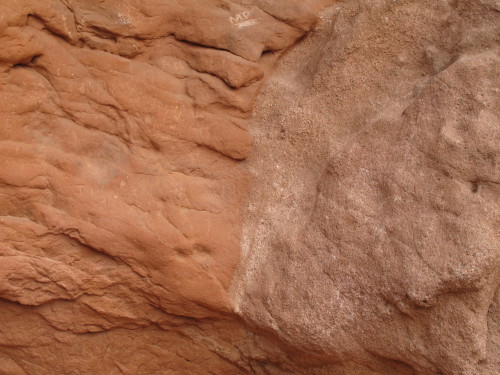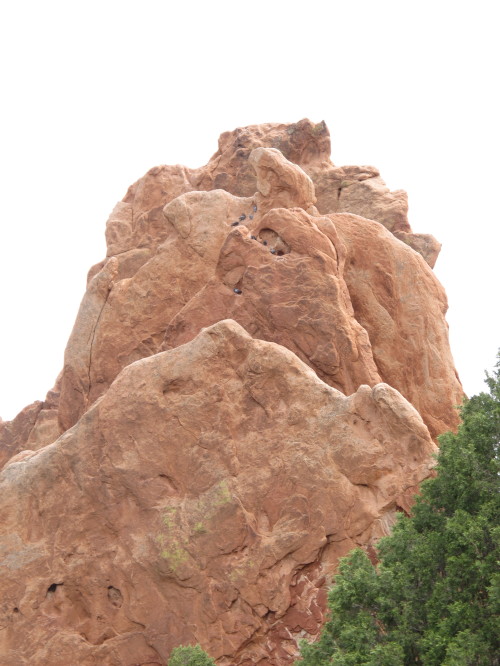Red rocks in the mountainous west
 In May, toward the end of a road trip, my mom and I found ourselves in Colorado Springs for a couple days. While looking for things to do while we were there, I stumbled across the website for a park with some amazing rock formations.
In May, toward the end of a road trip, my mom and I found ourselves in Colorado Springs for a couple days. While looking for things to do while we were there, I stumbled across the website for a park with some amazing rock formations.
Garden of the Gods park was set aside as public land in 1909. At that time, it was designated as a city park that would “forever be known as Garden of the Gods,” would not allow any “intoxicating liquors to be manufactured or sold in the park, no buildings except those necessary for the park to function,” and would “forever be open and free to the public.” Pretty cool. In 1972, it was recognized as a National Landmark.
Now, it’s filled with tourists, locals, climbers, and boulderers (you know, people bouldering…I may have just made up a word…). Since we were staying with some of my mom’s friends who live literally right behind the park, we were able to take the less crowded back trails for most of our walk.
 This formation is called “Kissing Camels”.
This formation is called “Kissing Camels”.
 Birds have made homes in some of the holes in the sandstone. This is evidenced by their white droppings that stain the rock below.
Birds have made homes in some of the holes in the sandstone. This is evidenced by their white droppings that stain the rock below.
 Can you spot the climber high up on this rock?
Can you spot the climber high up on this rock?
The geology of this area is really interesting. These rocks are all sandstone, but from different sources. Some of the rocks have larger grain, which comes from water deposits coming down creeks in the mountains. The smaller grain in other rocks is from sand dunes. And then there are the rocks with lines of both types of grain. I really just wanted to spend all day inspecting them really close up.
And while they’re old (not that old in geologic time, but the rocks in the park were formed between 600 and 180 million years ago), the rocks were eroded into their current shapes only about 10,000 years ago. If you want to approach them in chronological order, start at the west side of the park where the oldest rocks are and work your way eastward to the youngest rocks.
Fun Fact: The red color comes from oxidized iron. I also noticed that some of the rocks had grey areas mixed in with the red—these were areas of almost no oxidation.
 Here, you can see the two types of sandstone.
Here, you can see the two types of sandstone.
 This shows some of the vertical layers common in Garden of the Gods rocks.
This shows some of the vertical layers common in Garden of the Gods rocks.
Leading photo: Some of Garden of the Gods spectacular rock formations as seen from a nearby hill.
All photos by the author.
Ryan Weisberg is a graduate of North Cascades Institute and Western Washington University’s M.Ed. program. Ryan grew up here in Washington, exploring the natural areas around Bellingham and in the Cascades. Currently, Ryan is exploring the Rockies and teaching environmental education to kindergarteners in Boulder, CO. Ryan continues to enjoy writing for Chattermarks.

